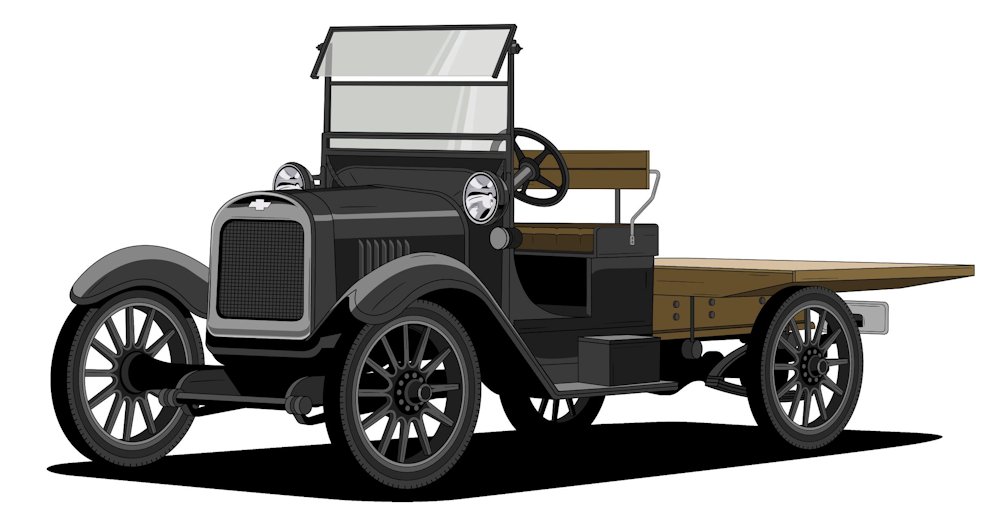
1918 One-Ton
The first production truck from Chevrolet was inspired by vehicles used in plants to move parts and pieces from place to place. In the simplest terms, this is an example of form follows function. It was a rolling chassis featuring an open cab, an inline four-cylinder engine and an open frame allowing customers to install the body that fit their unique needs. One striking design element is the beautiful badge, which was clearly a designed element of this truck. The font, the proportions and the dark blue, almost black color make a very sophisticated bowtie, even by today’s standards.
1918 One-Ton model, which featured a 2.8L four-cylinder engine with an estimated 45 lb-ft of torque. Its closest contemporary engine is the standard 2.5L four-cylinder engine in the Colorado, which is rated at 191 lb-ft of torque, or 76 lb-ft per liter — a 480 percent increase over the 1918 engine.
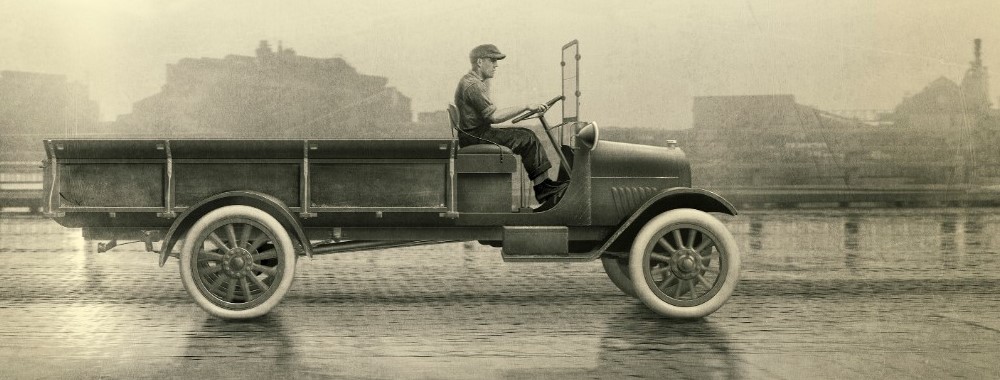
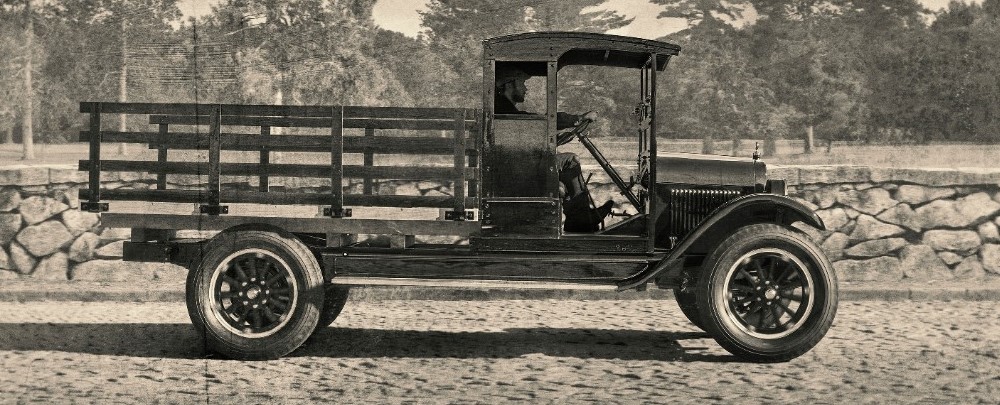
1918 – 1939 “Early Trucks” – Inspired by factory workers who modified vehicles to haul heavy supplies around the plants, Chevy created the first purpose-built truck, the One-Ton. Many truck milestones follow, including an economical mass-produced inline 6-cylinder engine in 1929 and the “Silent Synchromesh” transmission in 1932. Other innovations in this era include strong frames, long wheelbases, recirculating-ball steering and a 6-cylinder engine with 85 horsepower.
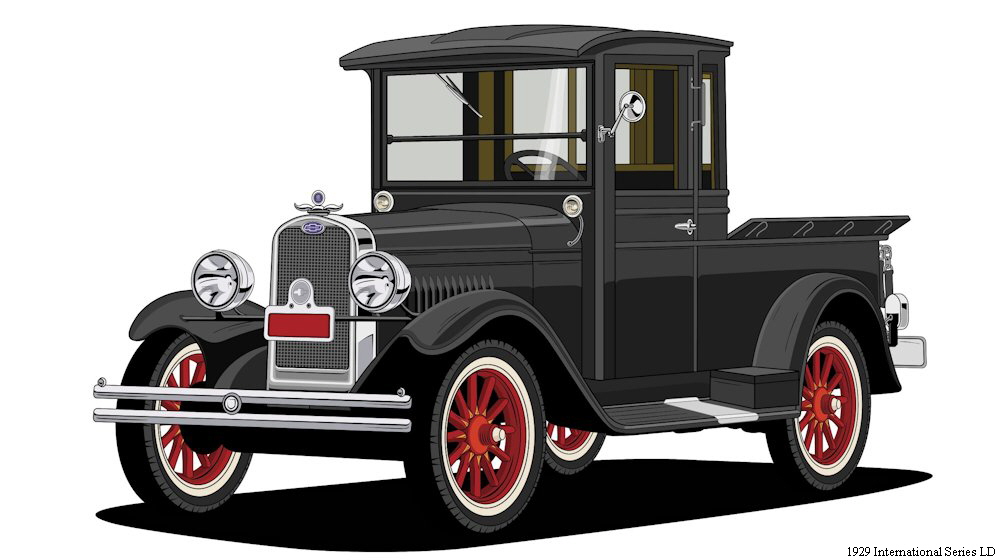
1929
The First “Stovebolt” Six. Introduced in 1929, Chevrolet’s first overhead-valve inline-six engine brought big torque to the masses. Displacing 194 cubic inches (3.2L), its all-new design helped generate strong torque at low rpm: approximately 120 lb-ft at only 800 rpm. That allowed Chevrolet to increase its work-truck load rating from 1 ton to 1.5 tons. The Stovebolt nickname was based on external fasteners that resembled the bolts on wood-burning stoves, but it quickly became synonymous with the engine’s durability. Several generations of Chevrolet’s overhead-valve straight-six engine were developed from the original design and served in Chevy Trucks through the late 1980s.
1929 International Series LD: The 1929 was the first Chevrolet truck to feature a closed cab, which created the potential for what we know as interior design today. As with all designs, once the functional elements were defined, more comfort- and style-focused features started to become important for truck buyers. It’s amazing how fast they went from the purpose-built 1918 truck to a more styled, closed-cab truck. This is also the time when we started to introduce color. The color combinations on Chevrolet cars and trucks from this period are something I still love today.
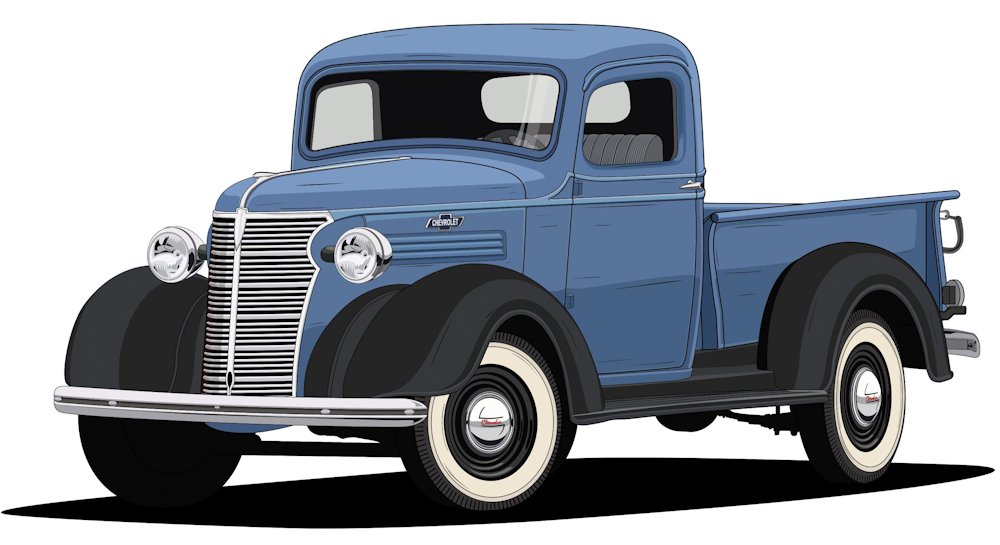
1938 Half-Ton
This was the first truck designed in the newly formed Art and Colour department, which was later to be known as Design Center, by Harley Earl and his team. (Earl became GM’s first design chief.) This year also saw the designs of cars and trucks deviate, as Design realized the need for trucks to have their own identity. As such, it is arguably the first example of Design’s influence on trucks. The proportions really evolved from the earlier designs, creating a lower and longer truck with a styled grille and elegant, swept fenders.

1939 – 1946 “Arsenal of Democracy”– In 1942, all Chevy factories were converted to support the war effort. Chevy built military 6×6 trucks, aircraft engines parts, 90 mm cannon barrels and the T17E1 “Staghound,” a 14-ton armored car equipped with two 6-cylinder engines.

1947 3100 Series
This is one of the most iconic designs in automotive history. If you mention a vintage Chevy truck, I think almost everyone will picture this model in their mind. It was such a departure, advertisers coined the phrase “Advance Design,” because it was bigger, stronger and sleeker than ever before. The five-bar horizontal grille is a departure from vertical grilles of the past and was the very beginning of what became a signature of Chevrolet truck design. You can see that the fenders are more integrated and the lamps are on the wide part of the vehicle instead of inboard, giving it a wider, stronger presence. The result is very handsome design with great proportions.
In 1947, The Gas tank filler neck was on passenger side of bed. No vent windows in doors. Hood side emblems read “Chevrolet” with “Thriftmaster” or “Loadmaster” under it. 1948 had Manual transmission shifter now mounted on column instead of floor. Early 1949, The Gas tank now mounted upright behind seat in cab; filler neck aft of passenger door handle. Late 1949, The Hood side emblems no longer read “Thriftmaster” or “Loadmaster”, but are now numbers that designate cargo capacity: 3100 on 1/2 ton, 3600 on 3/4 ton, 3800 on 1 ton.
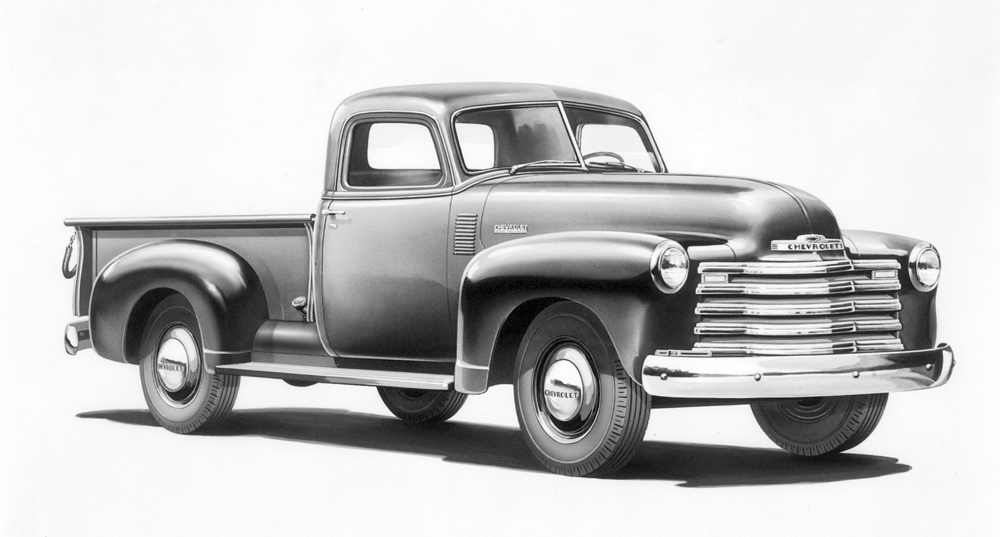
1948 Chevrolet Pickup
Chevy’s new Advance Design trucks for 1948 were the first completely restyled General Motors vehicles introduced after World War II. From the start, people loved the new Chevy pickups. (And they still do – the Advance Design generation trucks are cherished by collectors as classics today.) The new, roomier cabs for ’48 provided spacious three-across seating. The Chevy truck driveline, which had proved itself in every possible way during the war, hadn’t needed – or received – much tweaking. Reliable and versatile, the Chevy half-ton pickup continued as the farmer and tradesman’s four-wheeled friend. With the advent of the ’48s, more families began to consider a Chevy pickup for a second car.


1949 Chevrolet Canopy Express
During the decades since the first Chevy trucks rolled out in 1918, some once-common uses for Chevrolet trucks, and the special models that served these needs, have fallen by the wayside. Open-sided panel trucks called Canopy Express trucks were once common, and used for many types of delivery services. Before supermarkets came along, “hucksters” commonly vended fresh fruits and vegetables curbside in neighborhoods from such trucks. The GM Heritage Center collection has one of the last 1949 Canopy Express trucks in existence.
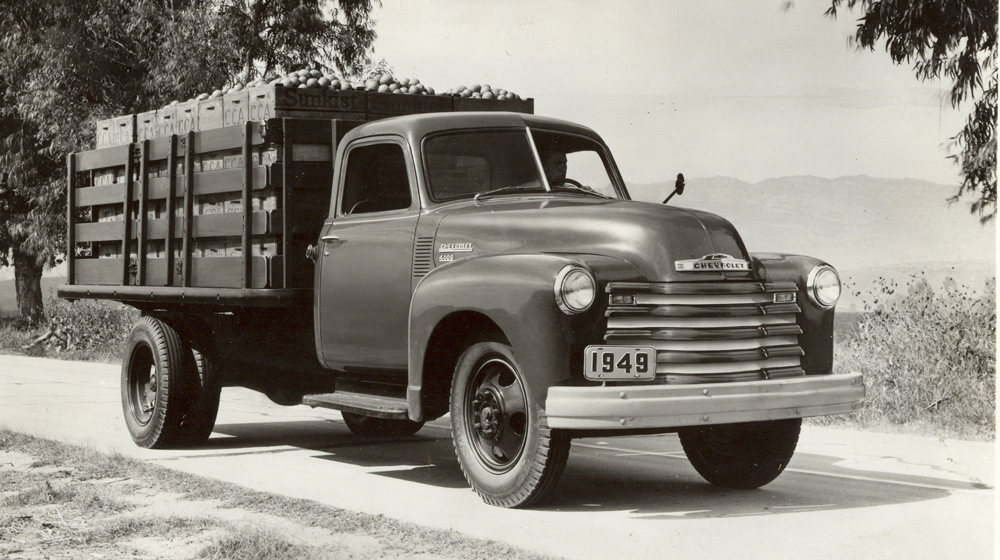

1947 – 1955 “Advance Design”– Trucks are billed as bigger, stronger and sleeker than ever before. The 3100 Series instantly became a classic with its 5-bar horizontal grille and rounded profile. The truck was offered as Half-Ton, Three-Quarter Ton and One-Ton in short and long wheelbases.

You must be logged in to post a comment.